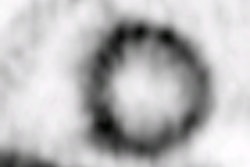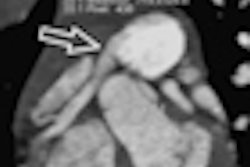Although undetected tampering of medical images by hackers or other parties may seem a remote prospect, research initiatives are under way to ensure it doesn't happen. A Singapore team has developed a tamper detection scheme based on digital watermarks that can determine if volumetric medical images have been altered.
In an article published online in the Journal of Digital Imaging, the researchers from Nanyang Technological University found that their technique was able to detect and identify tampered areas for users on a set of test cases. It also yielded an average 65% reduction in watermarking processing time, as well as a 72% reduction in de-watermarking processing time over their previous 2D method.
"We have developed an efficient encoding/decoding scheme to protect volumetric datasets using a reversible watermarking technique, [which has] the capability to detect tampering and localize the tampered regions," said co-author Poh Chueh Loo, PhD, an assistant professor in the university's School of Chemical and Biomedical Engineering.
Along with the increasing importance of digital medical images, the rapid development of information and communication technology has enabled faster access to electronic medical records. Consequently, a growing number of medical images are being transmitted over the Internet to be studied by clinicians all over the world, Poh said (J Digit Imaging, July 26, 2012). Poh collaborated with Guan Yong Liang, PhD, of the university's School of Electrical and Electronic Engineering, on the project.
"Medical images contain sensitive [patient] information, and when they are transmitted over the open network, they become vulnerable to corruption by noisy transmission channels and attacks by hackers or individuals with malicious intents," Poh said. "These attacks may include obtaining private information about the patient, changing patient information in the image header, and tampering with the image pixel content."
Subsequent use of such tampered medical images could lead to inaccurate diagnoses and incorrect treatment, he said.
"In the worst-case situation, it might even result in death of patients," he said. "Consequently, security of digital medical images is an important problem that needs to be addressed."
Volumetric images
Previous work on tamper detection has focused on 2D images or in applying 2D techniques to an individual image of 3D data acquired by modalities such as CT or MRI, according to the researchers. The team sought, however, to develop new tamper detection and localization schemes to exploit the 3D properties of volumetric images.
The researchers' encoding and decoding scheme uses a reversible watermarking technique that can detect tampering and identify the tampered areas of the study.
"We introduced the concept of vertical watermarking, which exploits the 3D characteristics of volumetric datasets to reduce processing time and computational complexity during de-watermarking and to improve the tamper localization resolution," he told AuntMinnie.com.
The technology will protect digital medical images and provide clinicians with assurance that the images are intact if no tampering has occurred, he said. If images have been tampered with, it will highlight the tampered regions; clinicians can then decide whether the images are still usable.
"This gives the clinicians the flexibility to decide whether to request for retransmission or continue to use the images, and help to reduce the time and cost of requesting data retransmission," he said.
Evaluation
The researchers evaluated the accuracy of their method on sample DICOM volumetric images, and they also compared its performance with their previous tamper detection and localization scheme that provided a 2D application on volumetric images.
Systematic tampering of four watermarked images was performed by tampering two pixels at random locations using Matlab software (MathWorks). The researchers' method achieved 100% tamper localization accuracy.
In an additional knee MR case, the team tampered with image regions that were of clinical importance. Three consecutive slices from the knee set were altered by thinning the femoral cartilage to show cartilage damage. The method also found and identified all of the tampered regions in this dataset, according to the researchers.
In a comparison with their previous 2D method, the team's new method yielded an average reduction of 65% in watermarking time and a 72% drop in de-watermarking time for knee, shoulder, heart, and brain volumetric datasets.
"The improved processing time makes the proposed scheme a more viable solution than to directly and iteratively apply a 2D method for securing 3D DICOM medical images in real-life medical environments," the authors wrote.
In the next phase of the work, the researchers plan to field test the technology in a clinical environment, Poh said.




















